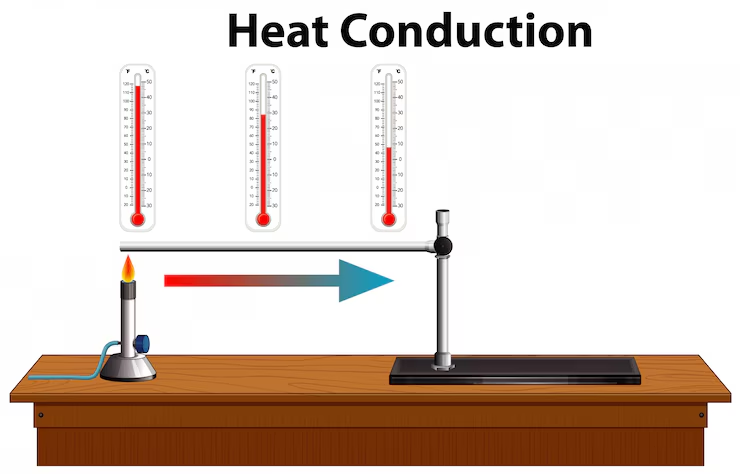Temperature is a topic we often take for granted. Yet, understanding it can make all the difference—especially when everyday conversations turn to health, cooking, or even weather conditions. One temperature that frequently comes up in discussions about wellness and normal body heat is 36.9 degrees Celsius. But have you ever paused to think about what this number means in Fahrenheit? If not, you’re not alone! This blog post will break down the conversion from Celsius to Fahrenheit while also exploring why knowing this specific measurement matters in various aspects of life. Ready to dive into the world of temperature conversions? Let’s get started!
Understanding Temperature Measurements
Temperature is a fundamental concept in science and everyday life. It measures how hot or cold something is, impacting everything from weather forecasts to cooking times.
Two primary scales are commonly used: Celsius and Fahrenheit. Celsius, widely adopted around the world, bases its measurements on water’s freezing point at 0 degrees and boiling point at 100 degrees.
Fahrenheit, mostly used in the United States, sets water’s freezing point at 32 degrees and boiling point at 212 degrees. This results in a different way of perceiving temperatures that can sometimes lead to confusion.
Understanding these scales helps us communicate effectively about temperature-related topics. It’s essential for health monitoring too—especially when it comes to tracking fever levels or normal body temperatures. Every degree counts!
What is 36.9 celsius in Fahrenheit?
When you want to convert 36.9 Celsius to Fahrenheit, the math is straightforward.
You can use a simple formula: multiply by 1.8 and then add 32.
So, taking 36.9 C, first multiply it by 1.8, which gives you about 66.42.
Next, add 32 to that number.
This results in approximately 98.56 degrees Fahrenheit.
Understanding this conversion is essential for various fields like medicine and cooking.
A temperature of 36.9 C indicates a mild fever in humans but may have different implications depending on the context or activity involved.
Knowing how to switch between these two scales helps avoid confusion when discussing temperatures worldwide.
Whether you’re traveling or checking your health stats, being fluent in both Celsius and Fahrenheit is handy!
The Formula for Converting Celsius to Fahrenheit
To convert Celsius to Fahrenheit, you need a simple formula. Start with the Celsius temperature and multiply it by 1.8 or 9/5.
After that step, add 32 to your result. This gives you the equivalent temperature in Fahrenheit.
For instance, if you’re converting 36.9 degrees Celsius:
First, multiply 36.9 by 1.8, which equals approximately 66.42.
Next, add 32 to this number for a total of about 98.42 degrees Fahrenheit.
This straightforward calculation helps bridge the gap between two commonly used temperature scales.
Understanding how to navigate these conversions is valuable in various contexts—whether cooking or monitoring health conditions like fever levels.
Why is 36.9 C Significant?
The temperature of 36.9 degrees Celsius holds particular significance in the realm of health and wellness. It is often recognized as a normal body temperature for adults, indicating that one is likely not suffering from any major illness.
When someone registers at this temperature, it suggests that their thermoregulation system is functioning well. This can be crucial during medical assessments, especially when evaluating for fevers or infections.
In some cultures, slight deviations from 37 degrees Celsius are also taken seriously as indicators of potential health issues. A reading at 36.9 might prompt further monitoring or consultation with healthcare professionals.
Moreover, understanding this specific measurement can help individuals maintain better general health awareness by recognizing what constitutes a typical range for them personally. Health enthusiasts often track these readings to optimize their well-being strategies effectively.
Practical Applications of Knowing the Conversion
Understanding temperature conversions plays a crucial role in various fields. For instance, healthcare professionals frequently use Celsius to monitor body temperatures. Knowing that 36.9°C translates to approximately 98.42°F can be critical for evaluating patient health.
In culinary arts, chefs often rely on precise temperature measurements when cooking or baking. A recipe may state an oven setting in Fahrenheit while your thermometer reads Celsius, leading to confusion if you don’t know the conversion.
Traveling between countries is another scenario where this knowledge proves beneficial. Many nations utilize the metric system, including Celsius for weather forecasts and other daily activities. Being equipped with this information enhances communication and understanding.
Even in scientific research, accurate temperature conversions help ensure data consistency across international studies. Each field emphasizes the importance of clear and precise communication regarding temperature metrics.
Other Ways to Convert Temperature Measurements
When it comes to converting temperature measurements, there are several methods beyond the standard formulas.
One popular tool is a digital thermometer that displays temperatures in both Celsius and Fahrenheit. These devices make it easy to read temperatures without any manual calculation.
Mobile apps also provide convenient options for conversions on-the-go. Many of these applications allow users to input a temperature and instantly receive results in their preferred unit.
For those who prefer traditional methods, conversion charts can be handy reference tools. They offer quick look-ups for common temperature values.
Online calculators simplify the process significantly; just type in your value, click convert, and voilà! With various approaches available today, finding the right method is easier than ever.
Conclusion
Understanding temperature measurements is essential in our daily lives. When we talk about body temperature, health professionals often use Celsius and Fahrenheit interchangeably. For instance, 36.9 degrees Celsius converts to approximately 98.42 degrees Fahrenheit.
To convert Celsius to Fahrenheit, you can use the formula F = (C × 9/5) + 32. Plugging in the number gives you a clear understanding of how these two scales relate.
The significance of 36.9 C lies primarily in its implications for human health. It’s considered a normal body temperature for adults; hence knowing this conversion can be crucial when checking fevers or monitoring illnesses.
Practical applications abound — from medical situations to cooking or even weather forecasting—understanding such conversions helps make informed decisions based on accurate data.
Beyond basic calculations, there are various tools available today that allow quick conversions without using formulas manually—apps and online calculators simplify this process seamlessly.
Temperature measurement might seem straightforward but it plays a vital role in many aspects of life and learning its nuances enhances comprehension significantly. By grasping how to convert between different scales, you’ll find yourself more equipped to navigate everyday scenarios where accurate measurements matter most.

